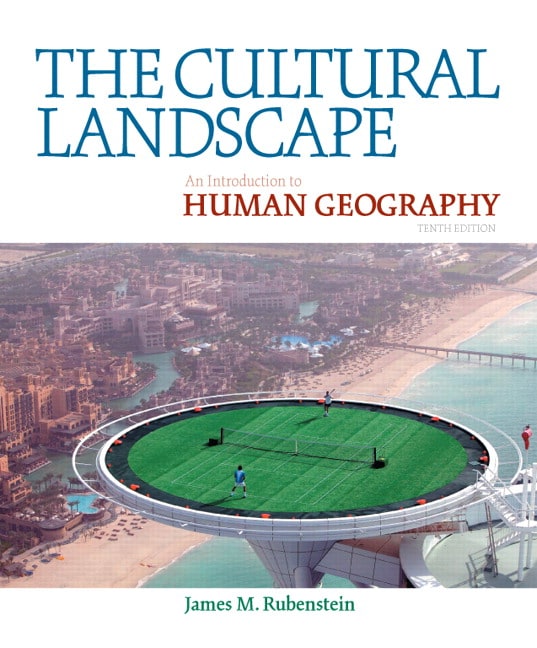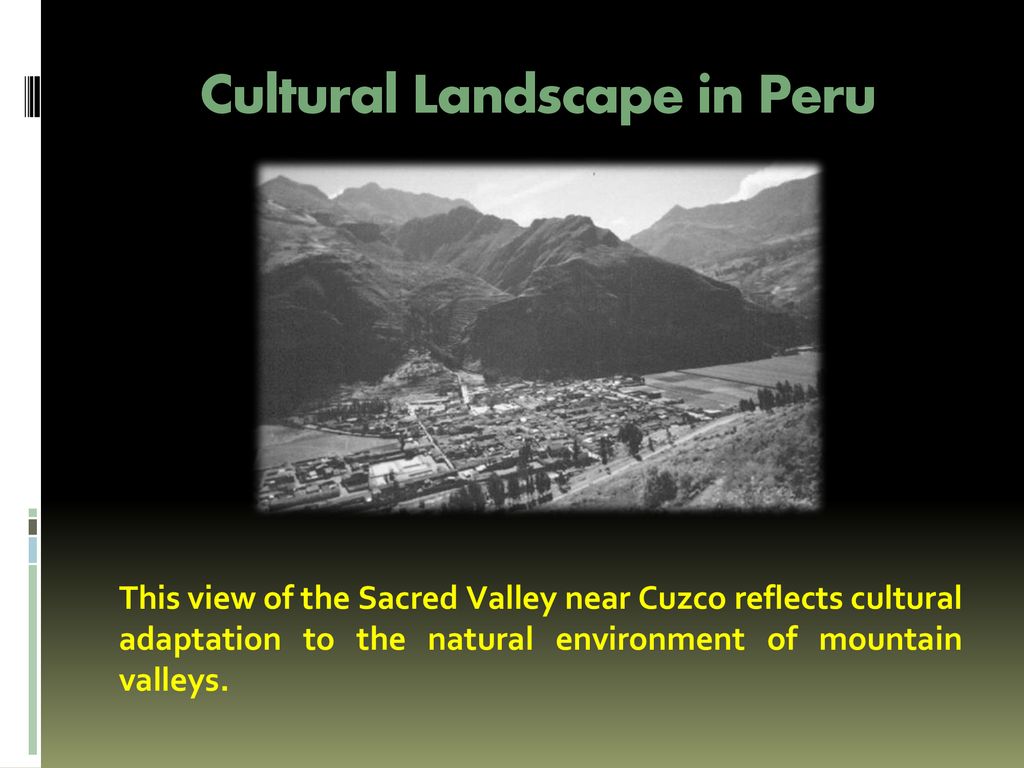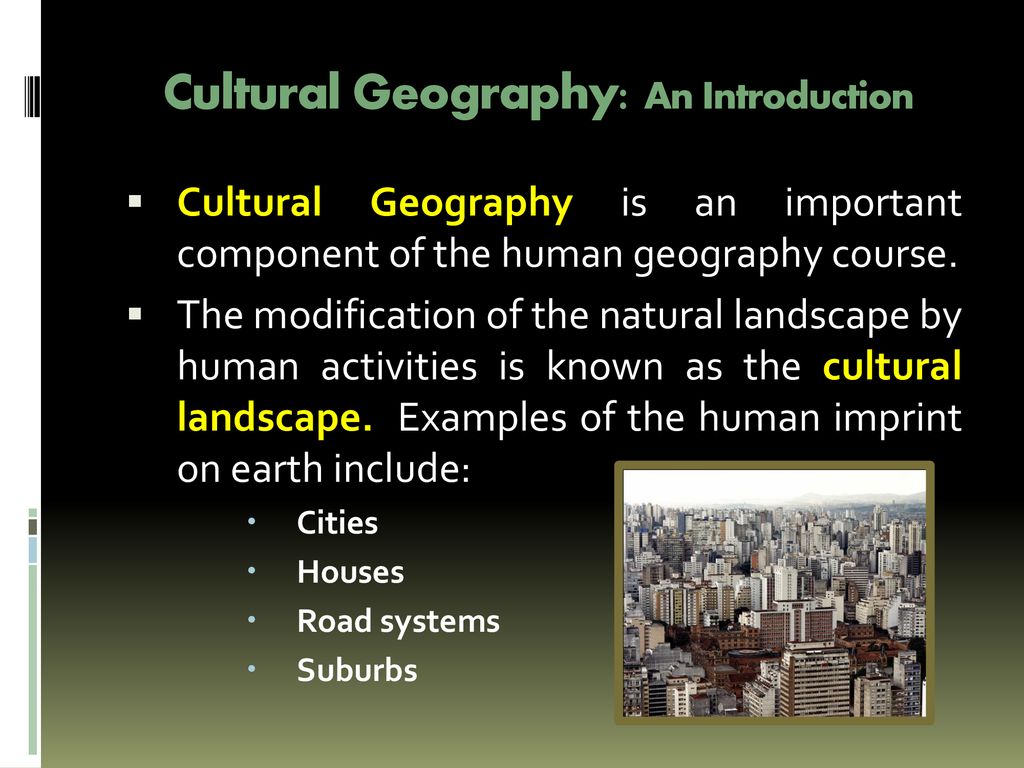Cultural Landscapes Cultural Landscapes Structures. The visible imprint of human activity on the landscape.
Overview Of Human Geography Cultural Landscapes
Their architecture is characterized with values of progressiveness exquisite intricacy austere beauty and logical flowing lines and its style is used in many non-religious building.

. Cultural ecology is the study of how the natural environment can influence a culture group. February 8 2022 What best describes an unsubsidized federal loan QA February 8 2022 Why is it important to consider the historical context surrounding an event QA February 8 2022 Who is the 1 president of Mexico QA February 8 2022 How often does a transmission need to be replaced QA February 8 2022 Under what circumstances does maintaining a proper. There are four general types of cultural landscapes not mutually.
The layers of buildings forms and artifacts sequentially imprinted on the landscape by the activities of various human occupants. Students employ spatial concepts and landscape analysis to examine socioeconomic organization and its environmental This se. Cultural Landscapes Cultural Landscapes Structures.
A landscape designed and created intentionally by man an organically evolved landscape which may be a relict or fossil landscape or a continuing landscape. Belief in belonging to a group or central cultural aspect. Trusted for its timeliness readability and sound pedagogy The Cultural Landscape.
Shows how humans interact with the environment impacting it culturally. The visible imprint of human activity and culture on a landscape. The course introduces students to the systematic study of patterns and processes that have.
Buildings artwork Protestant churches in the US South - Cathedrals in Southernwestern Europe mosques in Southwest Asia. A cultural landscape as defined by the World Heritage Committee is the cultural properties that represent the combined works of nature and of man. A group of cultural traits.
Area of land that shows the effects of features and patterns of human occupation. Cultural landscape is a term used in the fields of geography ecology and heritage studies to describe a symbiosis of human activity and environment. An Introduction to Human Geography AP Edition 12th Edition.
Language is the means of mutually comprehensible communication among people. The relationship between globalization and. Ones belief in belonging to a group or certain cultural aspect.
The practice of reading and interpreting the landscape can prove difficult because most people are not used to taking a critical look at what they see. WHAT IS AP HUMAN GEOGRAPHY. Cultural landscapes can be read and interpreted based on cultural features such as public spaces language of signs architecture and even food preferences.
Cultural landscape is a term used in the fields of geography ecology and heritage studies to describe a symbiosis of human activity and environment. What is a cultural landscape AP Human Geography example. The challenge is to take advantage of the site and situation of the community in which you teach.
Put simply a cultural landscape is a historically significant property that shows evidence of human interaction with the physical environment The National Park Service defines a cultural landscape as a geographic area including both cultural and natural resources and the wildlife or domestic animals therein associated with a historic event activity or person or exhibiting. Total number of people in an area. Cultural Landscape Study On this page Introduction Key Concepts and Ideas Logistics Back to Top Introduction AP Human Geography provides many opportunities for authentic learning using applied concepts.
The AP Human Geography course is equivalent to an introductory college-level course in human geography. An associative cultural landscape which may be valued because of the religious artistic or cultural associations of the natural element. Sauer argued that all regions of the Earth were impacted by human behavior and had been altered by human interaction he also believed that cultural landscapes were the most important branch of geographic inquiry.
For courses in Human Geography. The cultural landscape the imprint of people and groups on the land has long been of interest to geographers. The idea of cultural landscapes is most closely associated with the geographer Carl Sauer who first defined them.
Geographic approach that emphasizes human-environmental relationships. An Introduction to Human Geography emphasizes the relevance of geographic concepts to human challenges. Cultural Attributes Cultural Landscape.
Dialects are forms of a language that differ based on vocabulary syntax and speed. Strengthening readers connection to geography through active discovery-based learning. All the knowledge and values shared by a community.
Cultural Landscape a geographic area the includes cultural resources and natural resources associated with the interactions between nature and human behavior Sequent-Occupance notion that successful societies leave their cultural imprints on a place each contributing to the cumulative cultural landscape Carl Sauer. An associative cultural landscape which may be valued because of the religious artistic or cultural associations of the natural element. During the two thousand years of christian religion evolved the architecture partly by innovation and partly by imitating other architectural styles as well as responding to changing beliefs practices and local traditions.
Cultural features language religion food climate Arithmetic Density. Buildings artwork Protestant churches in the US South Cathedrals in Southernwestern Europe mosques in Southwest Asia. Distinct traditions beliefs and social life brought or controlled by a dominion of a monarchy of a certain region.
Cultural landscape is made up of structures within the physical landscape caused by human imprinthuman activities. Cultural landscape is made up of structures within the physical landscape caused by human imprinthuman activities. A cultural landscape is defined as a geographic areaincluding both cultural and natural resources and the wildlife or domestic animals therein associated with a historic event activity or person or exhibiting other cultural or aesthetic values.
Cultural Landscape The visible imprint of human activity and culture on the landscape. Geography Atmospheric Sciences Geography Atmospheric Sciences Introductory Geography Courses World Regional GeographyRegional Geography The Cultural Landscape.

Rubenstein Cultural Landscape The An Introduction To Human Geography Pearson

Cultures In The Cultural Landscape Ppt Video Online Download

Advanced Placement Human Geography Ppt Download

Advanced Placement Human Geography Ppt Download

Chapter 4 Key Issue 4 Folk Popular Culture Ap Human Geography Youtube

Cultural Landscape The An Introduction To Human Geography 2 Downloads 12 Rubenstein James M Amazon Com
Overview Of Human Geography Cultural Landscapes

Chapter 4 Key Issue 1 Folk Pop Culture Ap Human Geography Youtube
0 comments
Post a Comment